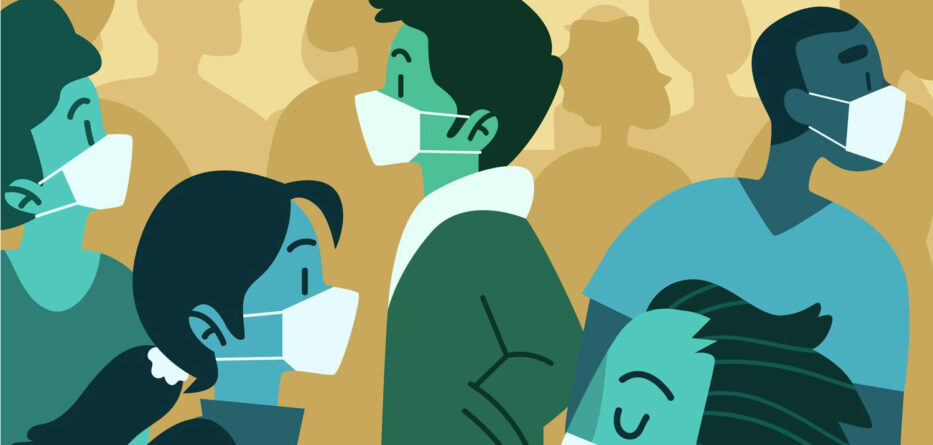Peter White
Ethnic Media Services
The Chairman of the Department of Medicine at the University of California San Francisco says the number of new COVID-19 cases is decreasing, wastewater infectiousness is relatively low and hospitalizations are going down.
“The state of COVID, at least as far as I can tell, feels reasonably mild compared to what we’ve seen in the past 3 years, and remarkably stable,” says Dr. Robert Wachter.
Wachter briefed reporters on an Ethnic Media Services conference call last week.
He said the biggest surprise about new variants driving the pandemic in the last 18 months has been the relative lack of surprises.
“We are still on the same Greek letter that we were since December 2020,” Wachter said, referring to the Omicron variant whose name derives from the Greek alphabet.
Since March, the World Health Organization has been monitoring the Omicron subvariant XBB.1.16, aka “Arcturus.” The variant has a higher transmissibility than previous ones but doesn’t appear to be more dangerous. The new strain accounts for about 10% of COVID-19 cases worldwide. People who get it tend to have a fever and some get pink eye. Both symptoms don’t last very long.
“The last year or so really feels like new variants are a little scary and then they turn out not to be that big a deal. And so I think, if past is prologue, that’s likely to be what happens with this newest variant,” Wachter says.
Staying safe even as COVID-19 restrictions fade
Dr. William Schaffner, Professor and Chair, Department of Preventive Medicine at Vanderbilt University Medical Center, says that while Covid can still be deadly, the risk of severe infection has diminished.
Dr. William Schaffner, Professor and Chairman of the Department of Medicine at Vanderbilt University Medical Center still wears a mask in crowded places, as does Wachter.
“Many of our population have experienced COVID. Many people have been vaccinated, and of course many people have experienced both, and so our level of protection is very high, and these Omicron variants seem to be spreading, producing milder disease,” Schaffner says.
“The therapies, the testing, the treatments that we’ve gotten used to all work about as well as they have for the last 18 months. In some ways the biggest changes are political and sociological. It’s clear that any rules and restrictions are pretty much gone,” Wachter says.
Americans have largely stopped wearing masks or hung them on their car mirrors just in case they may need them.
Schaffner says we need to keep our guard up. Older and immunocompromised people, as well as the unvaccinated, are the COVID patients who end up in the hospital. Vulnerable people need to get vaccinated, boosted, and wear masks.
“It turns out that the quality of the mask and the fit is important,” says Schaffner. The N-95 mask fits securely around your nose and chin. In the early days of the pandemic they were hard to find and controversy about wearing masks created a lot of confusion. Masks are no longer mandated except in hospitals and other places where the risk of infection remains high and it remains high for certain people.
“The other early mantra – that it’s really about protecting others and not you – it’s also wrong. It is about protecting others, but it certainly protects you, too.
It’s probabilistic. It lowers the chance of getting infected,” Schaffner says.
“If we’re not masking… I would say condoms prevent babies, masks prevent infectious disease. You’ll hear a lot of arguments about wearing both of them. But that doesn’t mean they don’t work,” says Dr. Ben Neuman, Chief Virologist of the Global Health Research Complex at Texas A&M University.
Arcturus variant likely not a game changer
Neuman said the Arcturus variant is different enough from the current vaccine strains that it has the potential to evade them because “it’s about as different from Omicron as Omicron was different from Delta and so just like we saw the Omicron wave come through, there is at least the potential for that.”
Wachter doesn’t think the new variant will be a game-changer though. For one thing, enough people have immunity now so the possibility of a super-spreader event is unlikely.
“The vaccine and the booster still work reasonably well in about the same way that we have thought for the last 18 months or so.” Paxil still works reasonably well, your home test still works reasonably well, Wachter says.
“The risk of getting very sick is probably not any different now than it will be in 3 years… so we all have to come up with strategies that allow us to live our lives as fully as we can while mitigating the risks in a way that’s practical and sustainable. And that’s different than two years ago, when we were all trying to get through it,” he says.
Wachter and Schaffner told reporters that they get boosted regularly. They are waiting for new vaccines that will be available in a few months for flu, COVID-19, and Respiratory Syncytial Virus (RSV).
Long COVID
Dr. Robert Wachter, Professor and Chair, Department of Medicine at the University of California, San Francisco, discusses what medical professionals and researchers have learned about long covid and what they’re still working to understand.
For people who get re-infected, the danger of long COVID increases, especially for women. Wachter’s wife, a former reporter who now writes books, has long COVID and she is learning to live with it.
“A year ago she was not disabled in any way in terms of getting through her days. Certainly, many people have it worse than she does,” Wachter says. “But most days at about one or two in the afternoon, she will text me and say I’m hitting a wall. I need to take a nap. She never had to do that before.”
A little bit of brain fog is making her “a little less good than she was” but it’s a consolation to know what’s causing it, he says.






